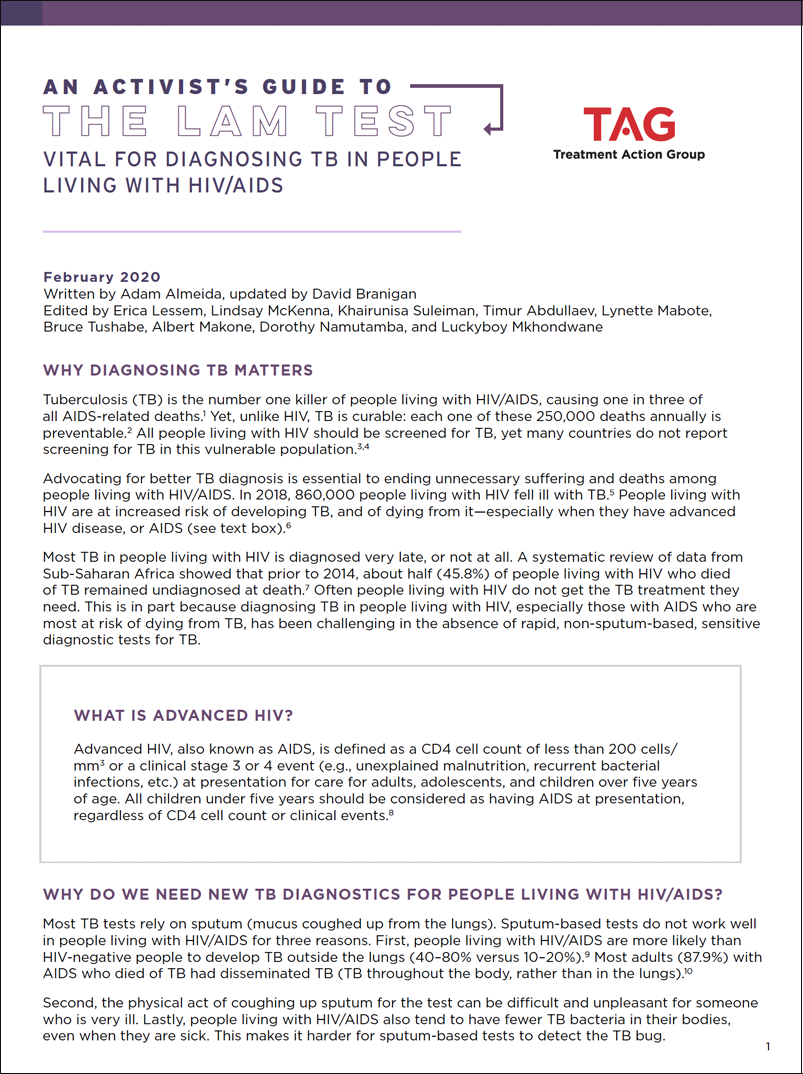Tuberculosis (TB) is the number one killer of people living with HIV/AIDS, causing one in three of all AIDS-related deaths. People living with HIV are at increased risk of developing TB, and of dying from it—especially when they have advanced HIV disease, or AIDS. The LAM test can rapidly and easily diagnose TB in people living with HIV, and has been shown to reduce deaths among people with AIDS. In 2019, the World Health Organization (WHO) strengthened and expanded its guidance on the use of LAM testing for TB, recommending its use for all people living with HIV, (1) who have signs and symptoms of TB, (2) who are seriously ill, or (3) who have AIDS, with less than 200 CD4 cells/mm3 for inpatients and less than 100 CD4 cells/mm3 for outpatients.
TAG’s updated An Activist’s Guide to the LAM Test provides important messaging and strategies to support in-country advocacy and activism. LAM testing has been available and recommended by the WHO since 2015, yet uptake within national TB and HIV programs remains limited. This guide seeks to help advocates and activists ensure that this life-saving test is made available wherever people living with HIV present to care.
The Availability of LAM Testing in Countries with High Burdens of TB and HIV (the Availability Dashboard) is a complementary resource that tracks the status of LAM uptake in the 30 high-TB/HIV-burden countries. The Availability Dashboard captures LAM: (1) inclusion in national TB and/or HIV guidelines; (2) registration with national regulatory authorities; (3) procurement by national programs; and (4) roll-out and implementation.
The information provided in An Activist’s Guide to the LAM Test and the Availability Dashboard indicates where targeted advocacy interventions can help improve access to this life-saving test for TB among people living with HIV.

